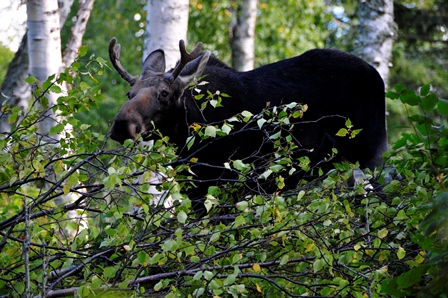Yep, the majestic beast at the top of the forest’s plant food chain is on the sh*tlist.
The Norwegian University of Science and Technology studied moose in Norwegian forests for several years and concluded that the species have a major effect on vegetation growth and are altering the carbon cycle by dining on tree buds. “
Fast-growing deciduous trees can respond more quickly to a warmer climate than conifers, so climate change will influence the composition of forests through increased deciduous tree growth. But deciduous species are also the most vulnerable to browsing.
“We studied how moose modify the climatic effect on boreal trees on two continents,” says biologist Katariina Vuorinen, who defended her dissertation in 2021.
Vuorinen took her doctorate at NTNU, focusing on herbivore browsing in 47 demarcated sites in Norway and 15 sites in Canada.
Moose browsing led to less growth in rowan and birch trees in Canada and in birch and pine in Norway. In Canada, rowan grew 4.7 inches less and birch 5.1 inches less than in the fenced-in plots. In Norway, birch grew 3 inches less and pine one inch less than in similar exclusion plots.
Vuorinen concluded that moose browsing counteracts the effect of a warmer climate on forest growth.
Seriously guys? A few inches of trees are contributing to global warming? Let me sure you something that really messes with the environment and climate.
Did you say CO2. Well here is that last centuries worth in 10 minutes. Ban volcanoes. Can we make them go solar or wind 🤔
— Omnicentrist 💉 MicroChip🆔️1984 (@Omnicentrist) March 12, 2023
pic.twitter.com/TjDWitwpO9
